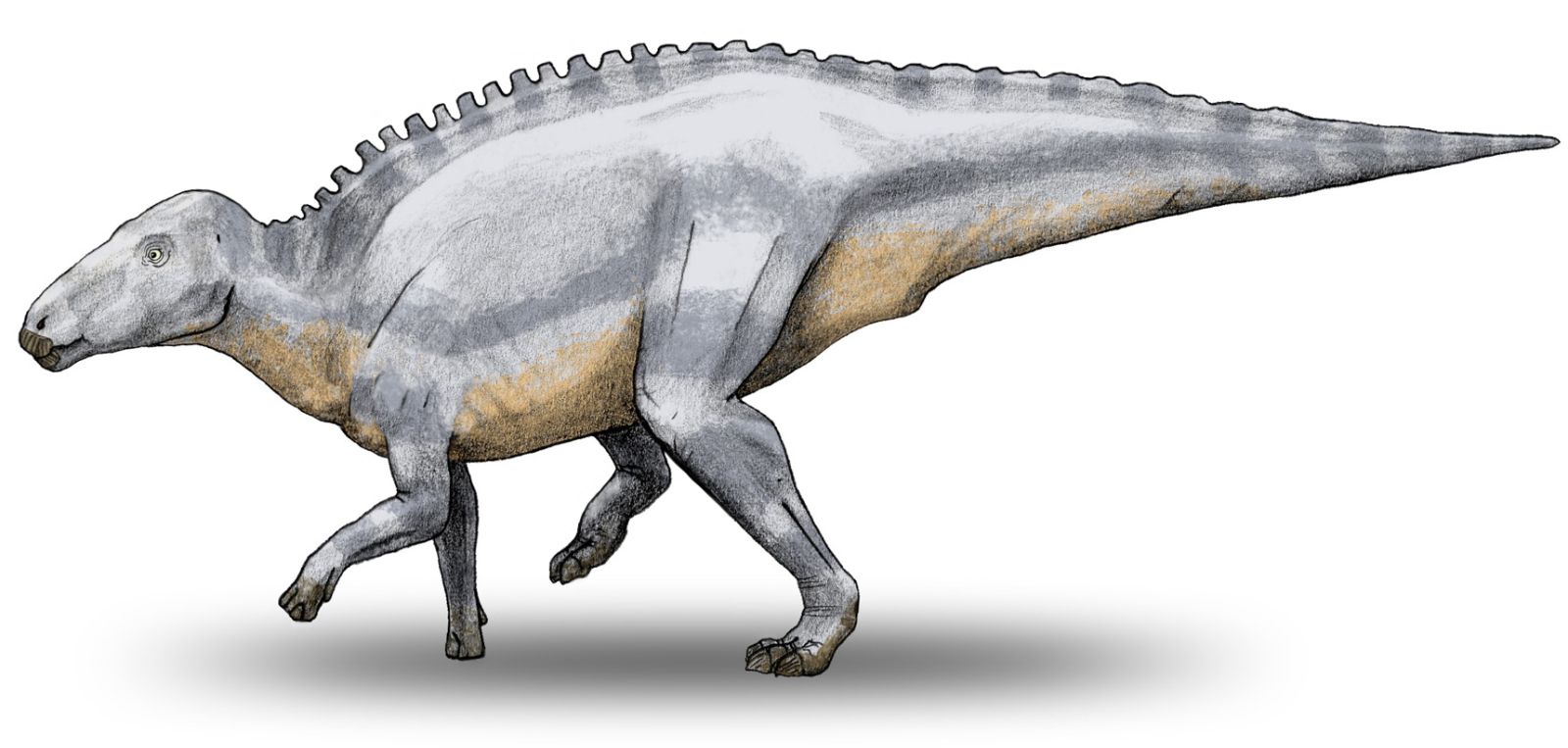Follow us on Google News (click on ☆)
An international team studied a fossil of Telmatosaurus transsylvanicus, a Cretaceous herbivore, using advanced microscopy techniques. Their findings suggest that ancient proteins could reveal biological mechanisms shared between extinct species and humans.

Image Wikimedia
70-million-year-old red blood cells
Electron microscope analysis revealed structures resembling red blood cells in the fossilized bones. Researchers identified potential biomarkers, including proteins linked to tumors. These elements could explain how certain diseases, such as cancer, have persisted through the ages.
A previous study had already detected a benign tumor in this same dinosaur. These discoveries confirm that modern pathologies have roots in a very distant past.
Dinosaurs as models for medicine?
Dinosaurs, with their size and longevity, offer a unique study ground for analyzing the evolution of cancer defense mechanisms. Their biological peculiarities could inspire new therapeutic approaches.
Proteins preserved in fossilized bones allow the study of diseases without relying on DNA, which is often degraded. This method, still underutilized, could be applied to other extinct species.
The authors emphasize the importance of better preserving soft tissues in paleontological collections. These valuable scientific samples could reveal many more secrets as technology advances.
Going further: How do ancient proteins withstand time?
Fossilized proteins are preserved better than DNA due to their stable chemical structure. Bone minerals protect them for millions of years.
Techniques like mass spectrometry allow their identification despite partial degradation. These analyses reveal similarities with modern proteins.
Some of these ancient molecules are associated with diseases, offering insight into their evolutionary history. Their study could help understand the origins of certain cancers.